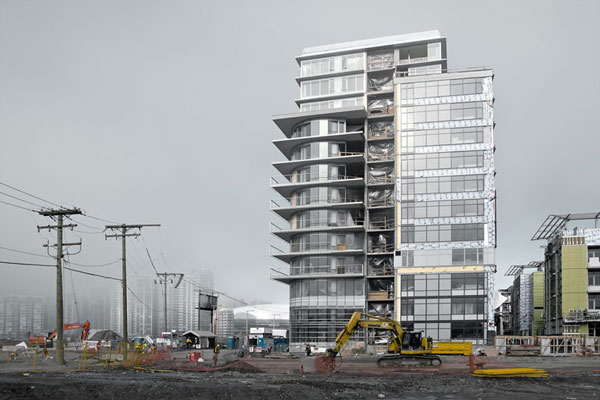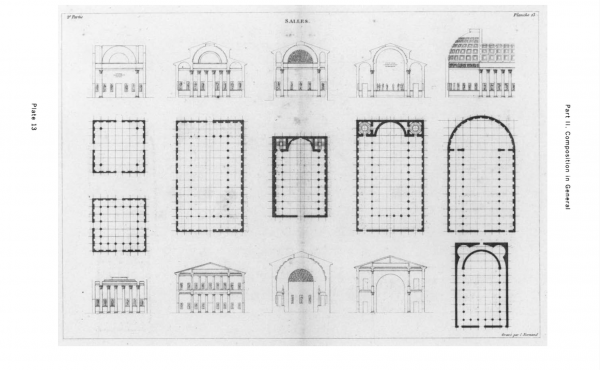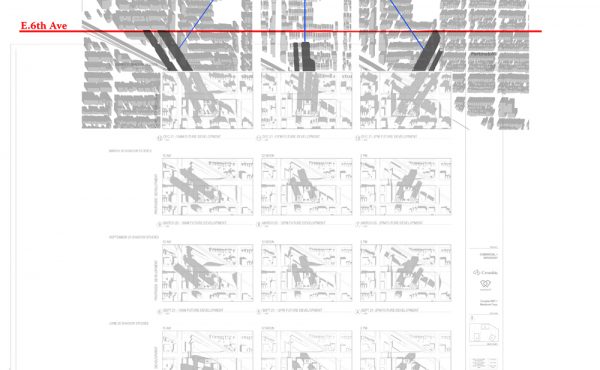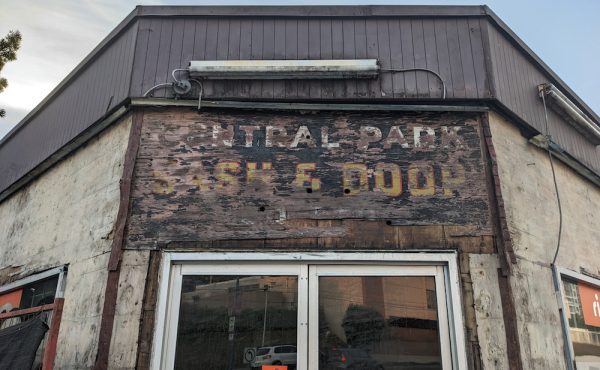
One of the most talked about sites in Vancouver’s recent history is the former Olympic Village. From the Olympic celebrations to the eco-sustainability of it’s infrastructure to the cost overruns and lingering public debt, the site has been the subject of more coverage than any other neighbourhood in recent memory. But for all this talk, unless you live or work nearby, or jog or cycle around this corner of the seawall, few Vancouverites actually visit the site regularly. Even fewer have spent as much time over the past several years as photographer Leslie Hossack.
Vancouver’s Village Photography Exhibit
“Vancouver’s Village 2008-2011: Constructing a Village, Creating a Community” is a photography show by Leslie Hossack documenting the construction of the Olympic Village on Southeast False Creek. It is now on display at the City of Vancouver Archives Gallery on Kits Point.
Hossack’s photographs document the recent past of a part of Vancouver with a long history. Before colonization, False Creek was well used by First Nations’ for hunting and fishing. For much of the 20th century, it was a hub of industrial activity. As industry left the city core, a sea of parking lots took over the site. Today, as residents move into the condos and apartments originally built for the Olympics, and businesses open up, the Village on False Creek is emerging as a vibrant community.
In-between the sea of parking lots and the current collection of condos was a unique time when the site evolved from a flock of construction cranes to an avenue of shiny buildings. Hossack, an Ottawa resident who visits Vancouver for three months each year, first noticed the site in 2008 when she was driving southbound over the Cambie Street bridge. She noticed several construction cranes rising from the ground and was immediately captivated. It was a dream site for a photographer interested in architecture — a massive zone of urban development in the heart of a city.
While documenting the site from 2008 to 2011, Hossack focused on two major themes: change and continuity, and representation and reality. These are fitting for a subject imbued with its own tensions. Southeast False Creek is a site that is both old and new that has evolved from industrial use to a residential setting; and from the site of an international celebration to the home of a local community. Such tensions are reflective of Hossack’s own duality as both a visitor and a resident. Her split perspective provides an informed view of our city while allowing impartiality from her subject.
Hossack’s unique approach to photography amplifies this duality. While may photographers would be interested in capturing the dynamism and intense activity of the site, Hossack took another approach. Her photographs convey a sense of stillness that borders on the surreal. According to Hossack:
I have been told that I see the world with an unconventional eye, and there may be a bit of truth to that. Throughout my life I’ve had a tendency to eschew conventional status symbols; consequently, I love the way the camera allows me to attribute elevated status to everyday objects and structures, and to portray the inclusive as exclusive.
Another aspect that makes her photography unique is a lack of people. This may seem like a strange omission for a series entitled Vancouver’s Village, but Hossack has a compelling explanation. She wants her photographs to seem timeless and feels that including people—and their clothing styles—ruins this perception. As such, many of her photographs look like architecture renderings. Indeed it is challenging to distinguish her photographs of architectural models and promotional posters from the rest of her work.
When asked about the “community” part of her subtitle—given the lack of people and the super-human scale of her work—Hossack explains that instead of photographing the people who make up a community, she wanted to capture the infrastructure that makes community possible. This includes the Canada Line station that helps moves the community, the Creekside Community Centre where the community comes for recreation, the condo units where the community lives, and the Neighbourhood Energy Utility that provides heating and hot water for the community.
Regardless of your personal views on the Olympics, the Village at False Creek, or the ongoing debt issues, this show is a must see for anybody interested in the urban evolution of Vancouver. It is rare to document the construction of a site, let alone turn it into an art show. Leslie Hossack has done both. In doing so, she improved our understanding and appreciation of this important place.
Details
VANCOUVER’S VILLAGE: 2008-2011: Constructing a Village, Creating a Community
City of Vancouver Archives Gallery
1150 Chestnut Street
Vancouver, BC, V6J 3J9
Exhibition runs until April 13, 2012
Mon. – Fri. 9:00am – 5:00pm
***
For more information about Leslie Hossack, check out her blog Haute Vitrine.
**
Yuri Artibise is a public policy analyst and social media specialist. Through his Yurbanism brand, he explores the ‘Y’ of urbanism by sharing ways to make our cities more livable, community-oriented places one block at a time. He currently works with PlaceSpeak, an online location-based community consultation platform.





One comment
Thank you for explaining this project in such detail, I wasn’t sure that I was really interested based on some stories I had read. This helps my decision. I am curious to see more photos before I go, I’ll check out your links. I’d like to hear more stories about the Olympic Village if you have any.